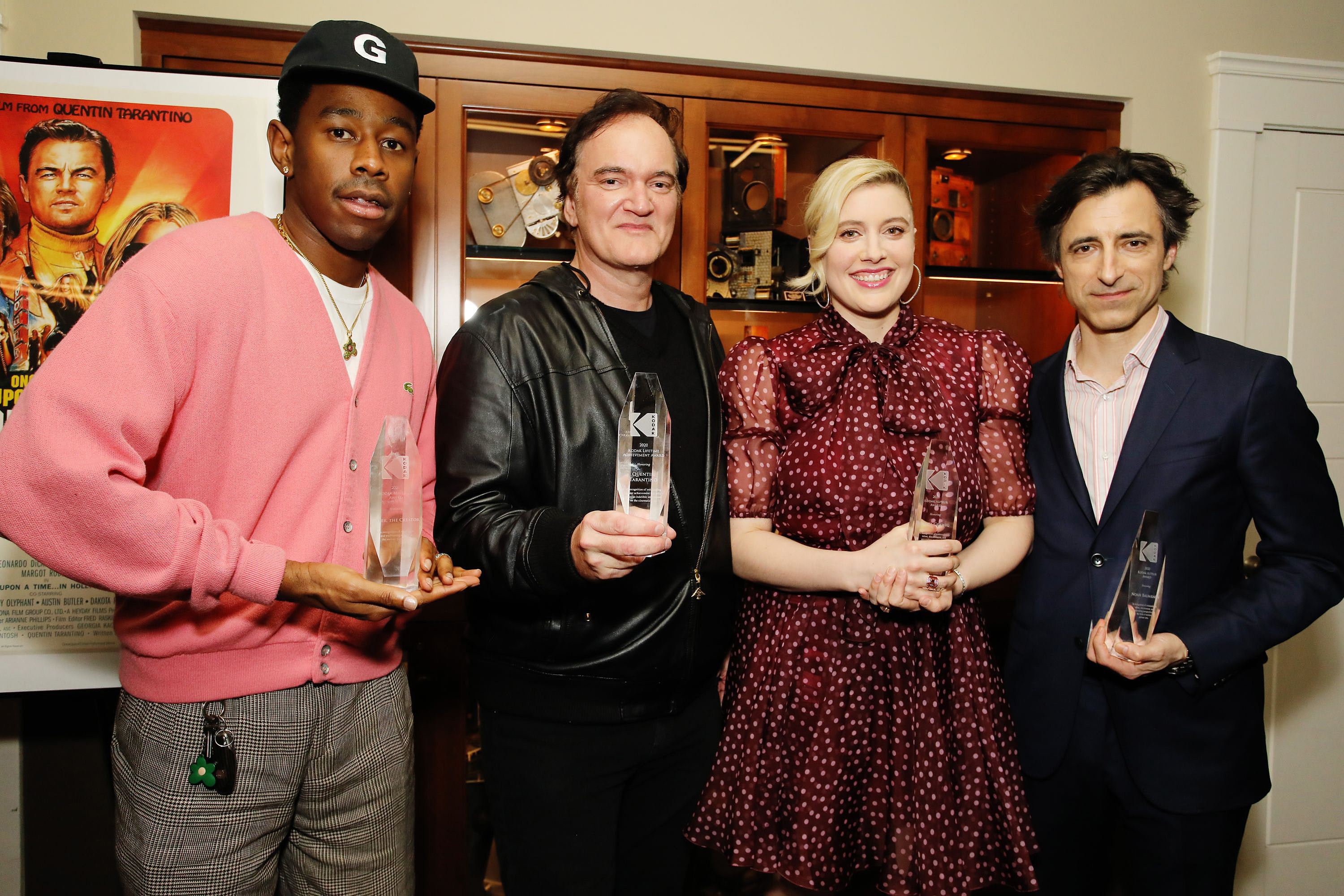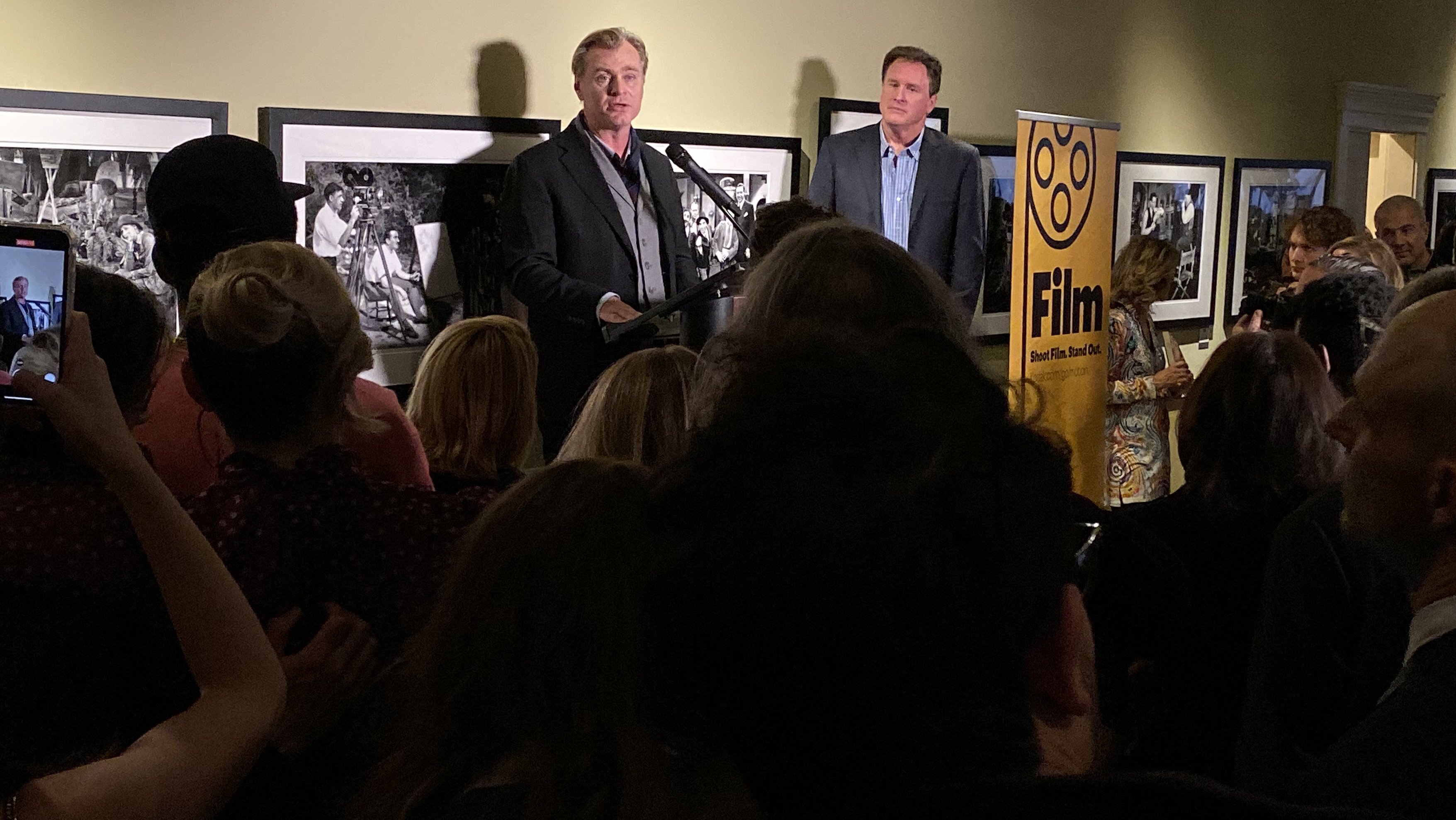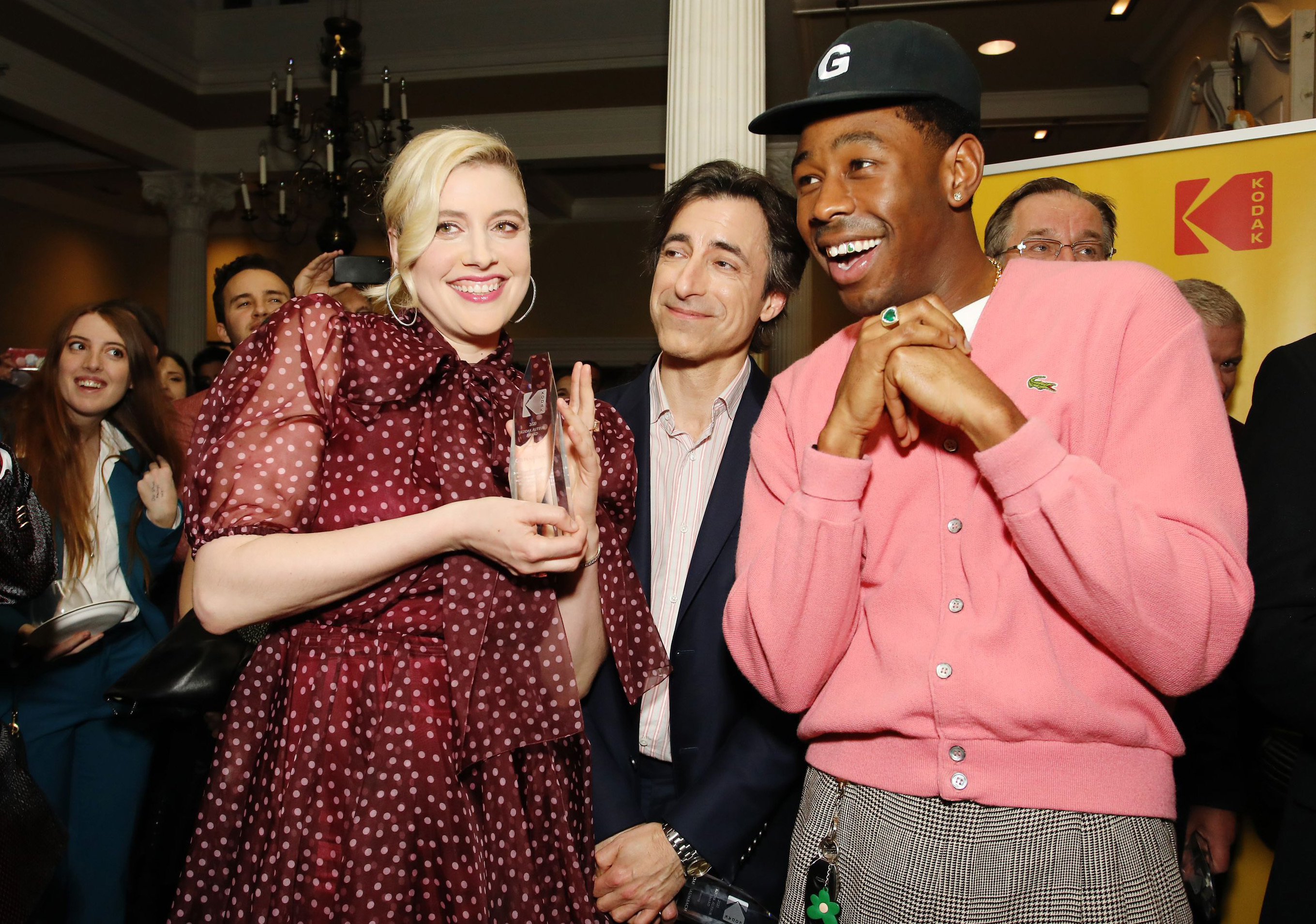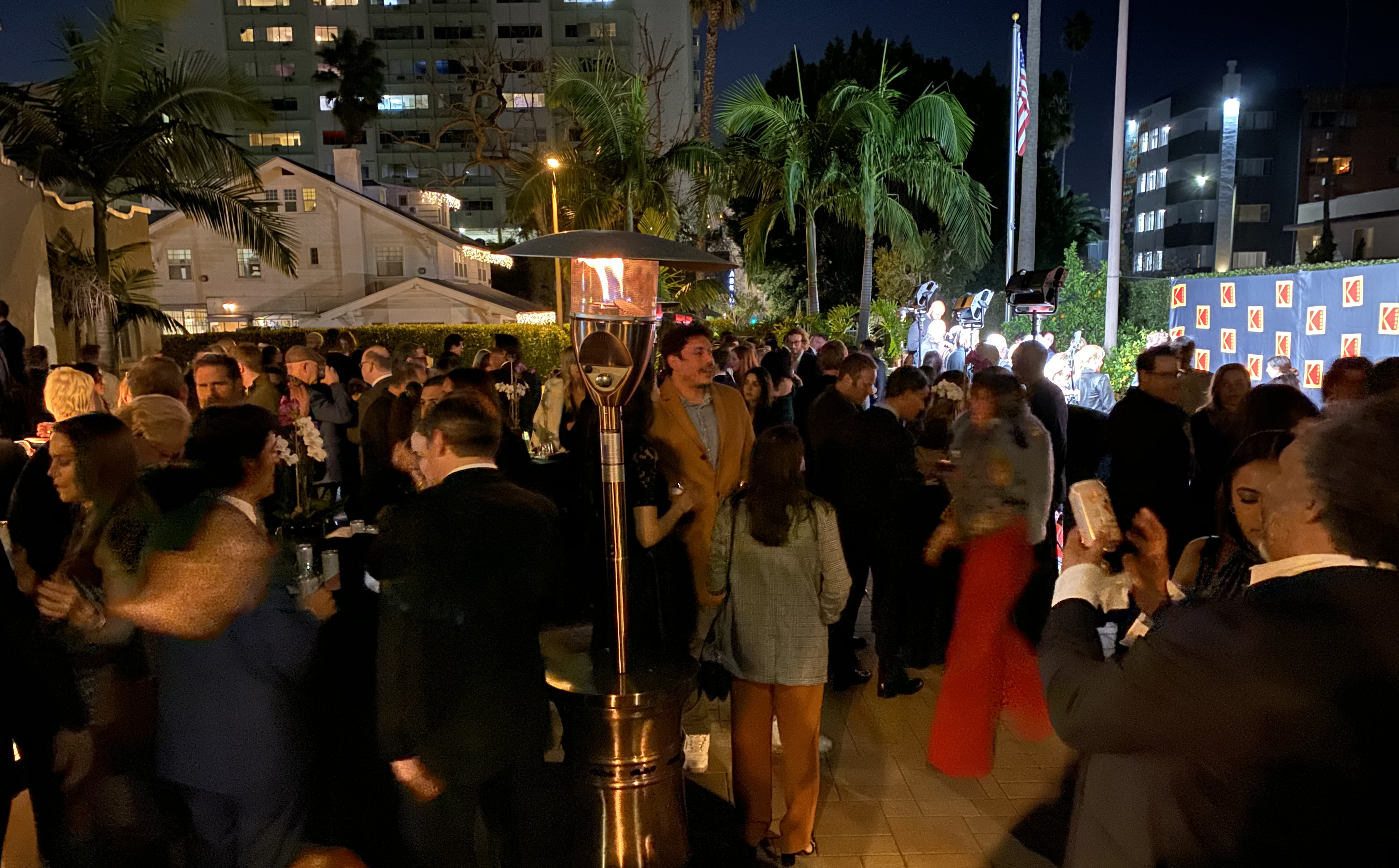
Kodak Touts Rebound at ASC Clubhouse
Industry heavyweights show their support as the company announces new deals with five major studios.

Photos by Getty Photography, Vivian Lau, Aleksandra Majka, Tiana Paopao and Stephen Pizzello
Kodak’s motion-picture business is showing promising signs of a rebound, according to Steve Bellamy, president of the company’s motion-picture and entertainment division.

On Jan. 29, Bellamy chose the ASC Clubhouse in Hollywood as the setting for a series of announcements during a press conference that was followed by a glitzy Kodak Film Awards ceremony featuring some of the industry’s top supporters of film: directors Quentin Tarantino, Christopher Nolan, Noah Baumbach and Greta Gerwig were all on hand to receive honors and support the format, along with ASC cinematographers Rodrigo Prieto and Dan Mindel; recording artist, producer and music-video director Tyler, the Creator; music documentarian Fran Strine; first-time feature filmmaker Melina Matsoukas (Queen & Slim); actor Alan Ruck, who accepted the TV Series of the Year Award on behalf of HBO’s Succession; and other notables who touted film emulsion’s creative benefits.


The headline from the press conference was Kodak’s announcement that it has renewed its contracts with five major Hollywood studios: Disney, NBCUniversal, Paramount, Sony and Warner Bros. Kodak maintains that the new deals will provide a stable baseline for long-term film sales, as well as cost savings due to improved forecasting.
Bellamy added that Kodak has also forged a promising working relationship with Netflix, reaching deals to provide film for top productions such as The Irishman, Marriage Story and a forthcoming television series helmed by Damien Chazelle (First Man, La La Land).
Statistics presented during the press conference support Kodak’s assertion that film sales are on the upswing; in 2019, the company says sales of 35mm stock rose by 6 percent. Bellamy asserted that sales of 65mm camera negative were even more robust, showing a 500% increase over sales figures from 2015. He maintained that in 2019, Kodak sold more 65mm stock than in any prior year. On a related note, he reported that more than 2.5 million feet of IMAX negative was shot over the past year — also the most ever.

Sales of smaller-gauge formats were also showing improvement. Bellamy said sales of 16mm film stock were at the highest point in seven years, nearly doubling sales figures from 2015 and reversing a six-year decline with four straight years of double-digit increases. According to Kodak, Super 8mm sales have improved significantly over the same stretch, with four straight years of 35% growth. Filmmakers have also demonstrated an increased appetite for black-and-white film capture, with features such as The Lighthouse, The Painted Bird and Bait contributing to an increase in volume from 3.6-million feet to 4.5-million feet over the past three years.

Kodak also announced multimillion-dollar investments in Super 8mm, acetate production and film-sensitizing infrastructure to meet the growing demand for film production. The company also plans to hire 220 new operators, technicians, chemists, engineers and maintenance workers to rebuild a film-centric workforce.
In kicking off the press conference, Bellamy conceded, “At Kodak we haven’t been talking to the press in the last five years that much. Before that there was not lots of news about film that was very positive. You had 10 years of double-digit declines; every monkey wrench you could throw at the medium [was] thrown at it. The two biggest volume drivers for film were print and television, and you had both of those industries kind of just shrink to nothing in one fell swoop with the SAG-AFTRA strike and with the virtual print fees that basically forced projectors to become digital projectors instead of film projectors.
“The current CEO of Kodak, Jim Continenza, was the chairman back then, and was basically asked by a lot of people to shut the factory down — the last film factory in the world — and he chose not to.
“Our division restrategized. We changed from a company that was basically taking orders to become a company that really tried to super-serve artists and help people get movies made, [or] make better movies.”

On the topic of exhibition, Bellamy maintained that more theaters are projecting film prints, citing 56 venues in Southern California and 32 more in Northern California. Tim League, the founder and CEO of Alamo Drafthouse Cinema and Drafthouse Films, participated in the panel to express his own support of the format. “We’ve been at it in the exhibition world for about 22 years, [and] we came into it with two basic ideas: we want to be at the service of the creators, and [we want to] exhibit their work as they want it to be seen. One of our main priorities is to have the best possible presentation, and you can’t service the greatest artists working in this industry without having film presentation. So we’re committed, for the long haul, to having 35mm and 70mm [in our theaters].”
Bellamy noted that Kodak has now opened or taken over photochemical labs in New York, London, Atlanta and Mumbai to increase film-processing capacity.

He also cited an increase in high-end film scanning before introducing Will Cox, CEO and lead colorist at Final Frame, who outlined some of the benefits of his company’s Luna Scanner, which he claims is approximately 45 times faster than the typical film scanner handling 65mm film at 8K resolution. The Luna can scan 35mm to 16K and 65mm 15-perf film to 23.5K — preserving, by Kodak’s estimate, at least 36 times more information than 4K. “The scanning of film for a long time has been about making an electronic estimation of what’s in film. We wanted to see how close we could get to really cloning the film.

“When we look at the Kodak specs [for its film stocks], we’re discovering that the company has been incredibly conservative over the years, and that there’s a lot more [resolution] in film than they say. We’re actively scanning now at 23K. It’s a preposterous amount of data to try and wrangle, but we’re seeing that that’s not even enough. So what we’ve discovered in terms of real-world scanning resolution is that for 35mm, somewhere between 16K and 20K [is] the point where you’re getting [all of the data] out of the film that is there. That’s far more meaningful resolution than in any digital camera anywhere. [In scanning the documentary] Apollo 11, all of the footage was 50 years old, and it looked like it was shot yesterday — and we only did that at 8K, because internally we couldn’t tolerate more data. That’s coming. But we need something like 40K to really get [all of the information] that’s in 65mm [film stock.]”


“Bellamy and Vanessa Bendetti, Kodak’s global managing director of motion picture and entertainment, also took pains to address the notion that shooting on film is more expensive than digital, contending that the format can save productions money by eliminating DIT carts and monitor villages, creating lower shooting ratios, and reducing some postproduction costs.
Following the press conference, Bellamy presented a series of Kodak Awards to the assembled honorees: a Lifetime Achievement Award for Tarantino, who was introduced by Nolan; Auteur Awards to Baumbach and Gerwig; Lumière Awards to ASC members Mindel and Prieto; a Maverick Award to Tyler, the Creator; a First Feature Award to Matsoukas; a Documentary Award to Strine and Power Chord Films; a Theatre Award to Alamo Drafthouse Cinema; and the TV Series of the Year Award to Succession.





